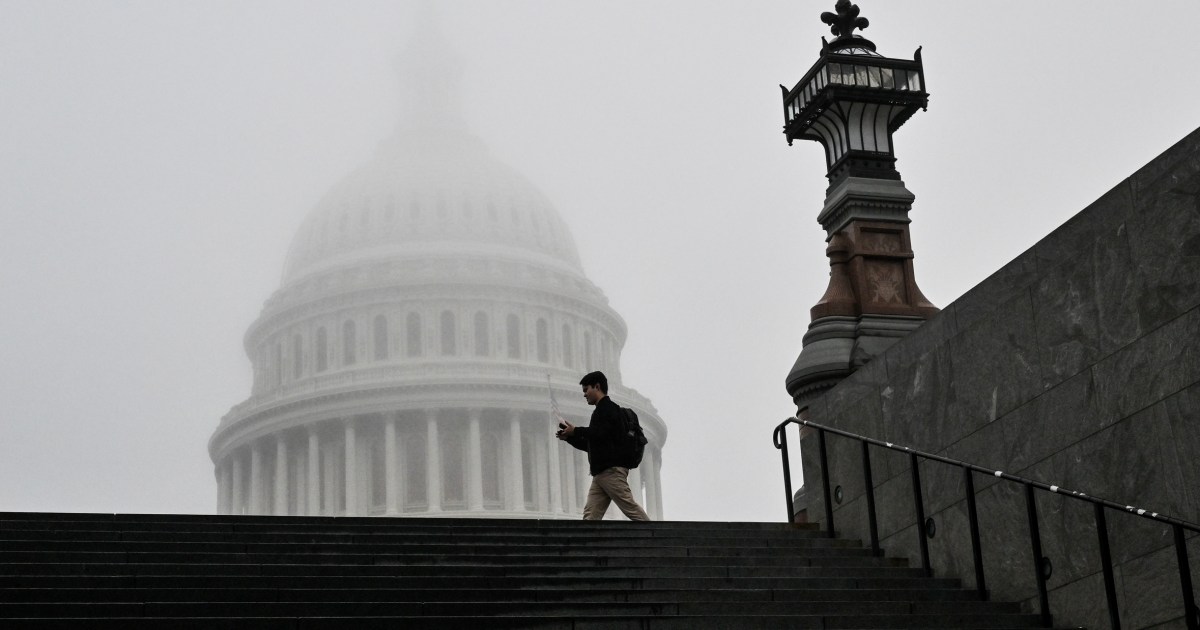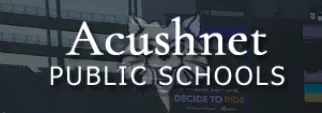World
An insider account of the India-US relationship under Biden and Modi

Washington: Anthony Renzulli served as the director for India at the US National Security Council (NSC) between 2022 and the middle of 2024, after having served as the acting director for India in the State Department in 2021-2022. Renzulli recently retired from the US foreign service after a 21-year long career. He is among the few officials to have a window into the US-India relationship from the ground in capitals in South Asia, and at the apex of the policymaking structures in State and NSC in Washington DC where he has coordinated the interagency process and negotiated with India on joint statements during high-level visits.
Overlooking downtown DC, on his office terrace at DGA-Albright Stonebridge Group, a strategic advisory and commercial diplomacy firm where he now works as an Associate Partner in the South Asia practice, Renzulli recently spoke to HT about the evolution of the Indian-US relationship. The interview follow up was then done over email. This is the first time Renzulli has spoken on the record about his years handling India. Excerpts:
Q: You have had a rich career dominated by the India account. Take us through that journey.
A: My first tour overseas in the Foreign service was in Mumbai. I was a vice-consul responsible for adjudicating visa applications. Work wasn’t exactly what I had signed up for, but I learnt a lot about the city and region and felt like I got to know something about aspirational India. In 2006, I was seconded to the political section at US Embassy in New Delhi, during the visit of George W Bush and the conclusion of the civil nuclear deal. As a junior diplomat, I wasn’t an active participant, but I was sort of present at the creation, that very heady moment when the US and India seem to be really aiming for the moon. We were dealing with a confident Indian government willing to make big bets. It was a moment that transformed the relationship.
Then I was a desk officer for Sri Lanka and India, and for two years, served a special assistant to Bill Burns, the then Deputy Secretary of State, between 2011 and 2013. So I had a good perch for India policy at the time, and things started to lose their intensity a little bit. The Congress government was in its last innings. There was often chatter that the US-India partnership had lost its momentum. We had gone backwards because of the liability law passage that followed the civil nuclear deal. That was a setback. But you tend to see these ups and downs. What you learn is that the downs, like the Devyani Khobragade incident, are not irreparable and that while progress can be slow, the upward trajectory continues.
I then did a couple of tours abroad away from India and you saw this progress pick up again. There was the major defence partnership strategic in 2015, strategic trade authorisation in 2016, and two different administrations actually turned out to be transformative.
Then there was the Galwan incident of course, and the closeness that builds again. But let’s face it. The US has supported India and past military conflicts before. We did that in 1962 and we were probably pretty supportive in 1999 too. But this was different. You see the convergence around China in particular, but also supply chains and the wider China problem start to gain clarity.
By the time I came back in 2021 to the India account, the timing was perfect. I was acting director at the state department for India. As we came out of the pandemic, both countries had a good story to tell about global good and the partnership for the world. I had the chance to go over to the White House and I had the sense that the action was there. And we did some big things in 2023, not least of all inaugurating iCET (initiative on critical and emerging technology) and then of course PM Modi’s state visit and India’s G20 presidency. This collectively accounts for a really a big set of positive outcomes for the partnership.
The big difference today compared to the early days is the real emphasis on implementation. The trend was maybe you do something and you bank it. But now there is an expectation of both sides that they are going to do the things that they pledge to do and they are intent on following through on that. For example, if you might look at past statements, you will see lots of stuff kept showing up every year. But now when I look at the joint statements you don’t see a lot of reiteration of stuff. There is a little bit of that. But it focuses on new stuff and the implementing of the stuff that’s been agreed. So you announce a GE engine deal or an intent to do a deal, and then subsequently you keep measuring the progress from going to intent to congressional notification to the next step in the process. So when Tanvi Madan (a Brookings senior fellow) says stuff not fluff, that’s the barometer.
US goal: Deepen strategic convergence, build policy alignment
Q: How does India look different from these different locations within the US government?
I would not say it looks radically different. In 2006, the president of the United States set a very clear agenda vis-a-vis India and broadly the US government — State Department in particular, but also the other agencies that were engaged — did not have to be cajoled. They were willing. Some of this was spurred also by growing impact of an Indian-American community. So I don’t think the rationale was ever particularly difficult here. But there was also something of a performative element. You would get a secretary of an agency and bring them in for a short dialogue or the signing of something, but not always much follow up.
Now, I think it’s more substantive. The functional issues, particularly around technology, are more challenging. And so there are limits to what State alone can do. Achieving and sustaining commitments is harder work than it ever was before. It’s not enough now to just meet, hold a meeting, publish a readout. You really got to get some stuff done. There is a complexity to the partnership. What we wrote in the joint statement in 2023 that this is a partnership that touches every corner of human endeavour, it may have sounded hyperbolic, but it kind of feels true sometimes. I can’t think of an agency that doesn’t seem to be involved in the partnership.
Q: Take us through an example of a policy from its birth to how it sees light in a joint statement or execution. How does diplomacy work behind doors?
You look around for things that seem supportive of your goals. And you need to have clear goals and objectives. In the case of India, broadly, we seek to build policy alignment and deepen strategic convergence where we can. We have long ago accepted that we are not going to agree with India about everything. But the goal is to continue to forge that policy alignment, and deepen convergence across the context in which policy alignment can be built, in our case within the context of the US Indo-Pacific Strategy.
Take the GE deal. We seek a defence partnership that I would characterise as a partnership of first resort. And so you have to look and say, okay, where are we succeeding and where are we not succeeding? What are the dynamics of the strategic technology transfer issues and how are they impacting ties? Can we just rely on a defence sale? Given the Indian government’s make in India agenda, the cost pressures, the context after Ukraine, we have got to come up with creative solutions.
So we work with a company like GE Aerospace and talk about hey, India needs jet engines for the light combat aircraft. It looks like they are going to be expanding production. Can we compete for that? And there are a lot of challenges there because this is more engine technology transfer than we have ever done before. Previously, the company and HAL might have negotiated a commercial contract, and then it came to the State and Defence departments which may have given it a thumbs down. So now you have got to do the work beforehand. In many ways, you have got to turn it around. You set the objective of what it is you want to do and make it possible.
You can apply that to the space cooperation. Our governments are on track for the joint effort to the International Space Station, where you will see an Indian astronaut in space alongside NASA astronauts. That’s a big first step. It is not the end goal. The end goal is going to be a joint mission one day between NASA and ISRO in space. And we will see that in our lifetime. So that’s why we are training Indian astronauts at the Johnson Space Center. The policies that we are laying out are not one-offs. These are setting conditions for really big future aspirations.
And the real change is not only on our side, it’s also on India’s side. The decision to join the Artemis Accord for example, which in and of itself is not the most alluring thing, but is also something that India typically doesn’t do. It doesn’t usually join US-led multilateral initiatives. We understood that. Several officials conveyed to us that India saw this as linked, everything was everything — technology transfer, technology sharing, the broad commercial space economy and our cooperation in that area was all part and parcel of India’s commitment decision to join Artemis.
I assess we are now prepared to do things for each other. So by setting up and really creating a positive strategic framing, we have the opportunity to advance policy. And that’s the challenge of our companies by the way. Now they need to make their offerings convergent with the strategic objectives, not only of India, but of the US-India relationship
Where India changed: An evolved non alignment
Q: What are the other changes you notice when you negotiate with India now, compared to ten years ago?
The Ministry of External Affairs (MEA) retains a certain predominance when it comes to international negotiation. And so you do have to manage the partnership with them. You have certainly seen an expansion now in terms of the breadth of equities that the Indian government now brings to bear that goes beyond MEA. I think if I could speak candidly, a challenge might have been to not really go around MEA, but to somehow find pathways that were not going to be necessarily blocked by it. I don’t think we have that problem anymore. MEA looks out for foreign policy priorities, but it is also an enabling partner and helps create the synergies with the other agencies of government.
The partnership between the NSC staffs, although the Indian one is much smaller, has obviously been a very productive channel. It’s not that it didn’t exist, there were highly productive relationships between NSAs. But I think there is now a workaday partnership, particularly around technology, but also around regional issues and deepening strategic convergence, particularly around third country challenges, that the two NSC secretariats now have that I think is quite new.
Among the great foreign policy legacies of the Modi administration is that this government has articulated — credit, of course, to this foreign minister — an evolved version of Indian non-alignment that has sort of freed India from the sort of trap that non-alignment can sometimes leave you with. It can be called a lot of things; multi-alignment, multipolarity, minilateralism. And obviously this is most evident in Quad.
Q: How much of this progress is driven by the top and how much of it now has become embedded in the bureaucracies?
I think the top level push is still needed. I do think there’s a greater embedding within the bureaucracy and that’s been ongoing. There are parts of government that kind of deal rather naturally and organically with their Indian counterparts. And sometimes this is true at different times than it is maybe today depending on the goals, like the time our State and Commerce departments partnered intensively with India on the NSG exception and accession to the non-proliferation regimes.
I remember who were the key players who would sit around the table at an interagency policy committee on India 10 or 15 years ago. The UN was not always a happy place in the relationship. WTO was not always a happy place. It’s still not necessarily. But if there are issues in Geneva, I don’t assess that they necessarily contaminate the trust that the US trade representative has sought to develop with counterparts of the Ministry of Commerce. In fact, quite the opposite. You could have some battles in Geneva, but USTR is resolving longstanding WTO disputes. So the space for that intense policy disagreement which could end up bleeding into the partnership has narrowed.
Where differences persist: In South Asia, on Russia, in the public sphere
Q: What are the sources of most intense frustration when within the US administration vis-a-vis India?
If you look at the sort of framing again around deepening strategic convergence and building policy alignment, you see where we are successful. Broadly speaking, around China, I think we have been largely successful. Middle East is increasingly becoming a source of strategic convergence that’s leading to good policy developments like the I2U2 or IMEC.
Where you don’t see the same depth of convergence, one might suggest that the challenges have been a little greater. Russia and South Asia come to mind. And that’s not to say that there’s only disagreement. I think a lot of the reported disagreement around Bangladesh has been somewhat overstated.
But one of the challenges in South Asia has been that our goals might be different than India’s in the sense that the prioritisation may be different. So India may prioritise counter-terrorism, its security, countering China or other third country influence as the highest importance. We may prioritise accountability for past alleged war crimes, labour rights, or other issues.
Both of us may value having stable democratic neighbours, but the prioritisation scale can be different. So you can’t quite find the convergence sometimes. Take an example. In Sri Lanka, we have worked together a lot. But the Indians want a 13th amendment, look for reconciliation. The US emphasis has been more on accountability. Our past emphasis on accountability over reconciliation has been a bit misguided. And the US may have lost an opportunity to help forge a solution to what essentially is a minority question.
Russia is a challenging issue in the US. It’s very important that nothing be done that enables Russia’s war fighting efforts. There is not considerable evidence that India is engaged in that, but India is also a large country, and so it does require a sort of a vigilance and an exchange of information and notes. If we see something that may be concerning, we will share it. And I think that give and take has been pretty good. India has to do what it thinks is best. But we have conveyed to them that we have a trusted partnership with India, particularly a trusted technology partnership and the values that underpin that partnership — you read them in the 2023 joint statement for example, or the G20 — are not values that are shared by Russia
Q: When Bangladesh’s change happened, how did you read it? And how did you read that the acrimony in the public sphere and the blame game and mistrust?
I think that’s been more true on the Indian side, although increasingly I do think there’s some elements of that in the US public opinion as well.
The challenge with South Asia is that the India prioritises these relationships at the very, very top of its foreign policymaking. It is ultimately going to prioritise these countries within the prime minister’s office and South Block, and these issues beyond what they may rank in the US. That’s not to say South Asia is not a priority. There are times when it has been the absolute priority, but I can’t say that the Indian periphery has been the focus of our broader Indo-Pacific strategy. So India brings an urgency to these issues that’s not always matched on the US side.
The second issue is the relative prioritisation. Both countries want the same outcome in a place like Bangladesh. You want a peaceful and stable country. India was concerned about what could be an outcome on the other side and a return to a situation that nobody wants, an Islamist challenge, a terrorism challenge that was dangerous for India, the US and the West and other countries. So this is the sort of the framing here, but anything is overcomeable. You just have to really work at it and commit the effort to it. And I suspect this will broadly improve.
Q: The sense that one gets from the public commentary, not from policymakers directly, is this sense of lingering mistrust between both countries, their intent, their actions. Do you sense this mistrust within government? And if you don’t, does the noise from outside affect you?
I don’t sense a deep mistrust within government. It’s not to say there aren’t pockets of mistrust within government. I think they have dissipated and to a certain extent they graduate and retire. Does all the noise affect things? I would not say especially.
But a large complex relationship like the US-India relationship will inevitably be shaped — and this is not necessarily a hindrance; it could even be an opportunity — by the media environment, other stakeholder environment. Foreign policy doesn’t exist in a vacuum and arises from political imperatives in Washington. You probably could draw the same conclusion about India. And so you ignore the noise at your peril and how you respond to the noise is either going to be engaging and constructive or just simply to ignore. And I don’t know that that’s always an option any longer.
I certainly think that before the Indian election, the American media — particularly print media, which the foreign policy watchers still digest and which shapes the broader agenda — did seem to be quite seized with the Modi challenge or Hindutva or however you wanted to characterise it. It seemed to actually bleed into questions that were almost completely unrelated in many ways to Hindutva.
My experience tells me as an operator that the US and India partnership can’t exist strictly on a transactional basis of shared interests. I think shared interests are okay, but those interests have to be expanded, otherwise they potentially won’t be enough. I personally received criticism — I wasn’t the sole drafter of our June 2023 joint statement, but I had a hand in it — about how it seemed too hyperbolic. I feel more confident today to say that we were on the mark, but I know that might have been a more challenging proposition to somebody say in the spring of this year ahead of India’s election in which India’s democratic robustness was on full display. Now some of that commentary has dissipated.
So I think you ignore the noise at your peril. You don’t need to indulge every bit of it but at some point, I do think particularly on the Indian side, we need to be making sure to engage the broader stakeholder community. And I think India has a good story to tell, and it doesn’t need to be defensive.
But the reality is that the US spends less time thinking about India than I think India thinks. And this is no discredit to India. India is a stable democratic partner of the US. And in that context, it is not a problem that you wake up every morning worrying about. You try to seize the opportunities as you can. You work with your leadership to help widen the framing for advancement. And then you go out and you have got to do the hard work.
One thing I once heard informally from somebody high up is that president and the prime minister, despite all their political differences, have some things in common. They seem to get up in the morning with a sense of what can they can do for their people. When leaders talk, there is something very heady and aspirational about it. And then a e seize that motivation and then we try to operationalise it. And that was my job at the NSC, taking that down through the NSC leadership as the director to try to coordinate that policy implementation across the interagency process.
Q: What is the one thing that you regret you weren’t able to push through?
I mentioned to you the unfinished business of the civil nuclear deal. I thought we came close. The president understands this issue. He had been involved in the Senate in the passage of the deal and we are still there. We had heard that maybe the political season was a challenge, but at some point, the SMR (small modular reactor) agenda, perhaps more than the Westinghouse deal, is very, very compelling. I assess that the US is ready to deal with the related issues that impede civil nuclear cooperation. But I can’t think of anything more compelling than US India cooperation on the deployment, for example, of a SMR scheme in India, for example, even a small one. That would be a real turning of the page. The Westinghouse deal may be too big and too hard. We’re still seeking to advance it, but it’s been a long time. Fundamental issues might be easier to resolve on SMRs. It also aligns energy challenges, strategic challenges and technology challenges since data centres need power. SMRs can power data. They can power coal-fired plants. I hope a future administration, Indian and US administration get it done.
From FCRA to State Dept reboot, the path ahead
Q: What would be your advice to the US and to India on how to deal with each other, and deal with the domestic politics of each other’s countries?
Some Indian policymakers would probably wish to respond to that question by telling the US to stay out of it. I don’t think that that’s entirely possible on our side as a practical matter. Invariably, we have to deal with our Congress in a way that maybe India doesn’t have to with its parliament.
Both sides have to deal with the other side’s politics as they are. India should have the confidence and has the capability to do that. I would encourage an openness vis-a-vis the US media and civil society. You have to be able to look at an issue, for example, a home ministry issue and understand how is this impacting our foreign policy. The most obvious issue of that is the foreign contribution regulation act (FCRA). This issue just impacts nearly all aspects of the partnership. When it’s acute, you manage it and you push and you try to diplomatically lobby and maybe you get some relief temporarily on a case to case basis. But you just can’t do that across the board. You have an aspiration for an educational partnership, yet FCRA is impacting your ability to do research grants and other educational cooperation. The US Embassy can’t work with organisations the way that it used to work to implement its programmes. There’s simply no equivalent for the Indian embassy here in the US. So there’s a disparity there that deserves a little bit of rebalancing around the reciprocity side.
We also have to figure out a formula to get Americans more exposed to India. You have a whole cultural milieu that a lot of Americans are not particularly experts in. It strikes me that a lot of ink is spilled about Hindu nationalism, and I don’t wish to discount it as a phenomenon, but one has to understand Hinduism before they are going to start to opine necessarily about Hindu nationalism and risk conflating Hinduism with extremism. The Indian side could expose India more because those who travel to India tend to find a country that feels inclusive, young, vibrant, modern and exciting. I don’t think enough Americans get exposed to it. Study abroad is the most obvious thing.
On the US side, I think engaging with Indian politics is fine. Indian embassy and diplomatic missions engage with our politics. They talk to Republicans, they talk to Democrats. Nothing stops us from doing the same. We should be active, we should be out there. The goal for the State Department should be to try to double down on strengthening that ability to continue to talk to people in this interconnected age. And I think getting to know a place means serving there more than once and really getting to know it, including its religion.
Your earlier question was ultimately about how enduring can this all be? Sound foreign policy will ultimately revert to the agencies. It almost always does. This is a moment of intense growth within the NSC, mostly because of the multi-functionality of issues that are challenging to us. But a little bit also, if I think if people were honest and the State Department were also honest, the trade craft of diplomacy needs to be reinvigorated on the State Department side.
Q: You think the onus to do that lies on the State Department or in the context of India also lies on India to engage more with the state department?
I don’t wish to read too much into it. I think that they should, and they should also let their more junior people do that. The embassy and Indian government can be a bit rigid on protocol. Americans are much more flexible. I think the Indians have become a little bit more flexible, but you could have a senior person in the US government who’s actually happy to meet with somebody more junior. They really don’t care. There’s an unwritten rule about how these things happen. What level does an assistant secretary get, for example, when they travel to India, those sort of things.
But it’s also incumbent on the US side that if a senior official, let’s say an assistant secretary or deputy assistant secretary, wants to go engage with his or her Indian counterparts or travel to Delhi, that they’re working off of the same script, that we’re not approaching policy in an ad hoc basis. Everything is interconnected. An aviation issue, for example, might impact the sale of hundreds of billions worth of airplanes. You can go on. Human rights issues can be dealt with, but they need to be dealt with in an informed way. And I think if you approach these issues with some patience and a degree of humility, more often than not, they tend to work themselves out.
“The political risk has shrunk, industry knows the partnership is here to stay”
Q: You have just moved to the private sector where you are working with companies and foundations that work in India. How does the relationship look like from here?
When Indians do make certain reforms around FDI, for example, in certain sectors, once the decisions are made, you see a consolidation and then things just move. You’ve seen it across parts of the banking sector. Yesterday’s problems aren’t today’s problems. When India decides to do something on reform, as a country that’s of law, when the decisions are made, they tend to be made. In many ways, the new stuff emerges because you’re dealing with new technology. Indian export controls were never an issue. India has to think about its own export control regimes and how do you harmonise them. That’s sort of new, right?
What’s missing is that the two sides need a bilateral trade and investment framework to really reach their goal of $500 billion in trade. The real challenge is not so much even a free trade agreement dealing with tariffs, but it’s ultimately about building a framework that’s going to enable that goal. We have no bilateral investment treaty. We have no market access agreement. We have no free trade agreement between the US and India. Fundamentally, that’s a shortcoming. But the US India partnership has a complementarity. The trade and investment partnership has a kind of a complementarity that could lend itself very well to such agreements. But I know in this political environment that’s very hard.
Industry now believes that the US-India partnership is here to stay. There were doubts about that in 2020-2021. Many were seeing some of the human rights issues that were coming up, and were saying, this India thing might not last. We are going to hit the rocks before we really lift off. The US and India have done a tremendous amount to shrink political risk. The political risk issues around the durability of the US India partnership have been largely addressed as best as the two sides can. But are we doing enough to deal with the operational issues that impede the implementation of our goals? Ultimately it isn’t about governments but handing this partnership over to the private sector and turning it into a generally private sector led and people led partnership.










